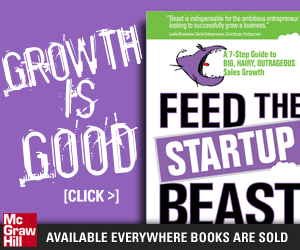How to Write a Blog (a.k.a. The Fear of Blogging)
How to Write a Blog
Do you freeze up when you need to actually write something that the entire world (potentially) could read? Does the word ‘content’ make you feel queasy? Does a little voice in your head say: “You’re not a very good writer.” “Yes you are.” “No you’re not.”
Hello, my name is Anastasia and I have never written a blog post before.
 Yes, it’s hard to admit. I develop blog topics, edit blogs, and direct writers as well as clients on how best to write an effective blog entry, but I have never actually written one. I know all about the “best practices” and the “how to’s” of “how to write a blog” and have been behind great SEO success and customer engagement due to well-crafted blog postings. So, what’s up with me not taking the plunge before now to write one myself?
Yes, it’s hard to admit. I develop blog topics, edit blogs, and direct writers as well as clients on how best to write an effective blog entry, but I have never actually written one. I know all about the “best practices” and the “how to’s” of “how to write a blog” and have been behind great SEO success and customer engagement due to well-crafted blog postings. So, what’s up with me not taking the plunge before now to write one myself?
The answer is ‘fear’. As we all know, fear gets in the way of success and can make something simple into a scary, overwhelming event, that’s best avoided (right?). For me, writing is putting a piece of yourself out in public. What if it sounds stupid? What if no one finds it relevant? What if no one reads it? What if… .
After a short pep talk reminding myself that I know how to do this and I’m a smart, successful marketing strategist… and ending with “and darn it, people like me”, I knew I had to get started. How? The blinking cursor and the empty screen were freaking me out. I needed to find a less intimidating way. I did a search and found a speech recognition software app called Dragon Dictation (www.nuance.com). I can talk and express my thoughts a lot more easily than I can write them down, so I just started talking into Dragon Diction, and out popped a bunch of text that contained my thinking. Wow.
Creative problem solving at its best!
Then I took the very advice I have given my clients on how to write a blog:
1. Brainstorm ideas.
Coming up with the ‘perfect’ blog post isn’t easy. And, it really doesn’t have to be perfect, now does it? It comes down to confidence in knowing your subject matter and what your customer / potential customer is interested in reading.
2. Create an outline.
Remember essay writing? It’s very similar to that except you need to ensure you have a strong headline. An outline is your roadmap.
3. Think about keyword phrases ahead of time.
Search engines love focused blog posts. If you want to get found by your audience, research what keyword phrases your audience would use to search for a solution. (The keyword phrase for this post is “how to write a blog” which accounts for about 12,000 web searches a month worldwide and has low competition. The title I wanted was “The Fear of Blogging”. You can see the results.) Keep in mind that the keyword phrase you decide on also has to intersect with your blog topic. You can use Google’s free keyword research tool to help you. Once you figure out the right keyword phrases, use them liberally in your title tag, headlines, sub-heads, body copy, and image tags. Thinking this through before you write is a lot less painful than writing first, and then working your keyword phrases back into your blog post. Trust me.
4. Give yourself deadlines and time limits.
I know that if I didn’t have deadlines, I would have been stuck in the details. I have also learned that I can limit my tendency towards procrastination if I set a timer for just 10 minutes – I can do anything for 10 minutes. It really helps to combat the feeling of being overwhelmed.
I gave myself multiple 10 minute deadlines for the different parts of this post:
– Outline
– Research
– Writing
– Proofing and editing
It’s so easy to get lost in your research and editing and perfecting, that writing your blog can become a real time suck. And then, if writing a blog takes so much of your time, it creates an unending cycle of procrastination. Bad cycle. Bad.
5. Plan to be consistent.
Publish your new post on the same day each week. It’s great for your readers to know when to expect your new post and it’s good for you to have a regular day and time that you know your blog needs to be ready.
6. Realize your limits.
I am going to write a post every week, but I know that if gets to be too much, then I will aim for bi-monthly instead. Quality is often more important than quantity. But consistency is always important.
7. Record / make notes for blog ideas.
The most wonderful feeling can come from having a few ‘extras’ in the pipeline. There are great mobile tools to help you with this like OneNote, Google Keep, and EverNote. When you come up with an idea, jot it down. It’ll save a lot of wear and tear later on.
So, here it is, my first blog post. How did I get over my fear? I didn’t, I haven’t, I still feel it… but here I am, done. Ha! And maybe, just maybe, the next one will be easier.
About Anastasia Phillips
Anastasia Phillips is a passionate cross-channel marketer who opened the southwest to the AMA, drove business for the likes of Apple and the Australian Lottery Corp., and brings a deep set of digital and traditional skills to a diverse group of clients in the education, retail, and tech industries.






Recent Comments